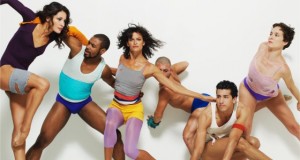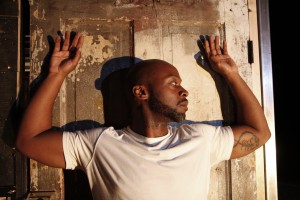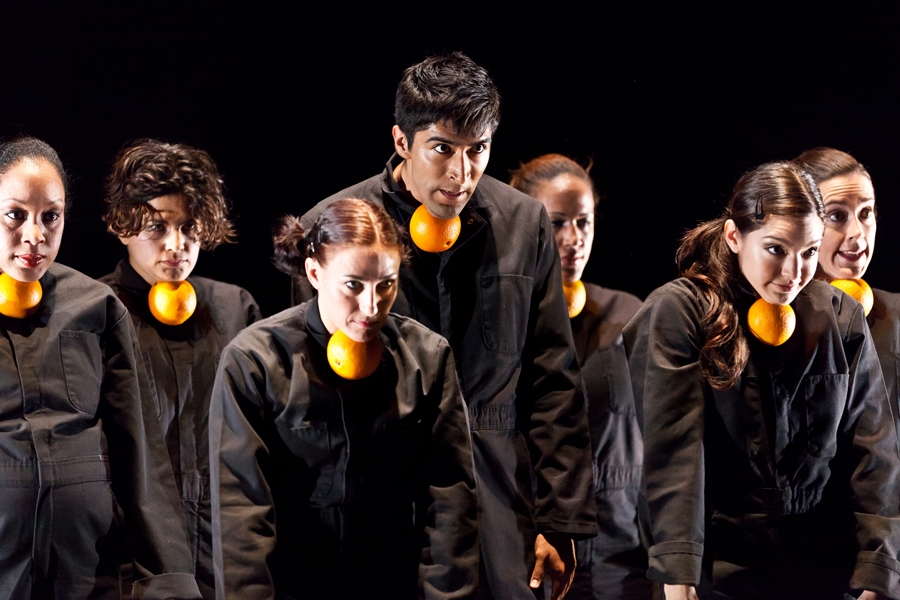Contemporary dance prevails this autumn in Houston, with two events in particular focusing on themes of color, literal and figurative. They are major works that suggest a new, prosperous and invigorating period in this city’s dance scene.
The premiere of choreographer Karen Stokes and composer  Bill Ryan’s The Secondary Colors in Houston (see my preview story in Houston Chronicle at the sidebar) was not only a chance to hear some first-rate musicians play Ryan’s strikingly  original score, but also a gathering of the finest contemporary dancers in the city.  The piece is a great success, sophisticated and imaginative, unlike any other dance I’ve seen. Â
Divided into three distinct movements (respectively, Green, Orange, and Purple), it got me thinking about many things, not the least of which is the sense and purpose of an ensemble. How do people come together to make a dance? What do they convey together that they couldn’t as individuals? To what degree is the choreographer aware of working with such unwieldy concepts as mass and volume? How should that many people be dressed?

As in many other large American cities, it’s often the dominant ballet company that boasts the largest number of dancers and subsequently the biggest ensemble in the area. This is true in Houston.  Houston Ballet’s corps-de-ballet is often an ensemble within the group, sometimes divided into males and females, sometimes with everyone working in unison, sometimes with everybody moving in a seeming chaos. The corps-de-ballet is often secondary to the soloists and principals, functioning as a moving frame for the more accomplished dancers.  It can be necessary for the narrative to progress. In Giselle, for example, a human community is needed in order to witness the lead character dancing towards her death. In the second act, a corps of Willis overwhelms the few scared men who gather in the woods.  A corps-de-ballet is often necessary in order to create a spectacle.
Society for the Performing Arts presented Complexions Contemporary Ballet a few weeks ago in Houston, proving that ballet companies are not the only ones with a tendency to depersonalize people into a “corps,†however. Dwight Rhoden makes solos and small ensemble pieces, of course, but his most typical pieces are huge spectacles where everyone stays on stage and never stops moving. This came off most miserably in the program’s finale, set to various songs by U2 played at high volume, the choreography “played†to the audience in a style reminiscent of Riverdance. The piece was irritating enough to make me leave before it finished. Â

Flashback to 1986: the premiere of Mark Morris’ Mythologies in Boston with a new score by Herschel Garfein. In the early days of the Mark Morris Dance Group, his extraordinary ensemble was the result of extraordinary individuals. Morris seemed to invite dancers who looked entirely different from each other. There was something exhilarating about seeing them move in unison. In the first section, Soap Powders and Detergents, they worked together to create the illusion of a washing machine. In the second, Championship Wrestling, they were in opposition to each other. In the finale, Striptease, they were naked, the ultimate manifestation of individuality.  Years later, Morris began to homogenize his company, and it’s never looked quite the way it did in those early years.
Stokes’ Green begins with an extended section of clapping and body percussion, another method that gains considerable power then performed (with portions in unison, others in couterpoint) by a large ensemble.  The most successful sections of this movement are when the dancers are behaving like one big green machine, to whatever purpose. They are dressed in divergent green thrift-shop clothes: conflicting plaids, cartoon-like knit caps with green pom-poms, green canvas high-top sneakers. It is less successful when they are whispering “grass” and being too literal about the color they are dancing “about,†or rather, “within.†What emerges in the end, however, is the striking sense of individuality, as if Stokes has studied each person closely and made a hundred solos that, when performed simultaneously, look like an ensemble.
The dancers have to have something to depart from in order to appear as individuals. There has to be some imposition of conformity before we can see them for their uniqueness. Green gives the feeling of a community healing from some sort of crisis. In the subsequent movements, Stokes uses the ensemble to explore humor (Orange) and evokes some kind of soothing heaven, complete with restorative snow, in Purple. Throughout there is a rare balance between the individual and the group.
The Cynthia Woods Mitchell Center for the Arts presented red, black & Green: a blues a week later at University of Houston, with music, dramaturgy and original music created by Marc Bamuthi Joseph and the Living Word Project. It is a compelling work focused on the “greening of the ghetto,” raising a multitude of questions while managing to entertain a wide audience. Some of those questions included, “What’s the difference between healing and coping? Where does it hurt? What does healing have to do with social justice? What are we gonna do when we have nothing left ot eat?”

The dance/music/theater work used a sophisticated strategy to create a sense of ensemble. When the house opened, the entire audience was invited on stage to witness the performers in a handmade shotgun house (created and installed by Theaster Gates with media design by David Szlasa) that later transformed into several units. Bamuthi Joseph chopped and offered fresh watermelon while reciting an emphatic text. We found ourselves inside the piece just by showing up.
It is an epic work with choreography by Stacey Printz, documentary films by Eli Jacobs-Fantauzzi, photography by Bethanie Hines, lighting by James Clotfelter, music by Tommy Shepherd aka Emcee Soulati, costumes by Mai-Lei Pecorari, and sound design by Gergory T. Kuhn. It focuses on the African-American commnunity’s perception and realization of the green movement as it continues to unfold in Chicago, New York, Oakland and Houston. The latter is uniquely described: “Houston moves at the pace of a place without time.”
Bamuthi Joseph knows how to provoke an audience without picking a fight, and as the evening progressed, he started to feel like an impetuous member of my own family. As he moved though long hip hop dance phrases without losing his breath, his ruminating speeches created layer upon intriguing layer.
“I am fighting to move Europe from the center of my psychological map,†he explained one moment. “The current face of imperialism is handsome and brown,†he said at another.
Perhaps the most intriguing ensemble is the problematic one in which you find yourself inevitably complicit.

One response to “Color My World With Hopes”
Great post, i’ve just posted this to FB. The current hip hop artists just don’t kick it like the 90’s artists.